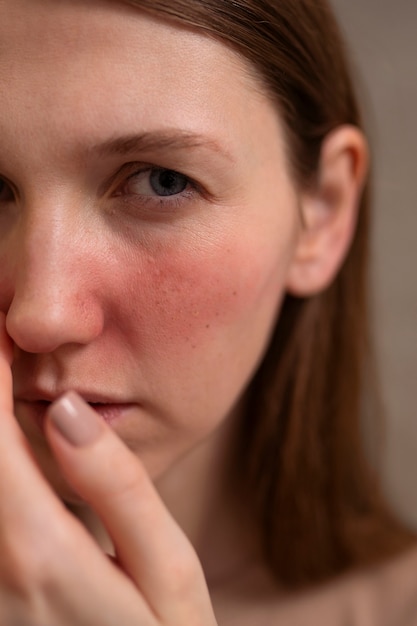Psoriasis is a long-term inflammatory skin condition where the skin cells grow too quickly, creating raised, red patches covered with silver-white scales. The exact cause isn’t fully understood, but both the immune system and genetics are key factors.
Understanding Psoriasis
Psoriasis causes thick, scaly patches on the skin, usually appearing on the elbows, knees, scalp, and lower back, but they can show up anywhere on the body. The condition is not contagious, so it can鈥檛 be spread through contact.
Types of Psoriasis
Psoriasis comes in several forms:
– Plaque psoriasis: The most common type, found in over 80% of cases.
– Guttate psoriasis: Affects about 10% of people with psoriasis.
– Inverse psoriasis: May occur with plaque psoriasis or on its own.
– Erythrodermic psoriasis: Rare, affecting less than 3%.
– Pustular psoriasis: Also rare, involving less than 3% of cases.
Causes and Triggers of Psoriasis
Psoriasis is caused by a mix of genetic and environmental factors. While a single cause isn’t identifiable, genetic predispositions and stress significantly contribute.
Genetic Factors
Psoriasis often runs in families due to multiple defective genes. This genetic link may affect the immune system, which can wrongly target the skin.
Immune System Involvement
Certain factors can trigger psoriasis in genetically predisposed people. These include stress, trauma, infections, sunburn, smoking, alcohol abuse, specific medications, hormonal changes, and poor diet.
Environmental Triggers
Environmental elements that can trigger psoriasis include:
– Stress
– Physical injuries
– Infections
– Sunburn
– Smoking and alcohol
– Certain medications
– Hormonal changes
– Poor eating habits
Symptoms of Psoriasis
Psoriasis usually appears as red patches and plaques with clear borders, accompanied by silver scales. These might itch mildly, but the primary concern is often their appearance. Psoriasis comes and goes, with symptoms improving in the summer and worsening in the winter.
Diagnosis of Psoriasis
Doctors typically diagnose psoriasis based on skin appearance and where the patches are located. Occasionally, a biopsy may be done to rule out other diseases, like fungal or viral infections.
Treatment of Psoriasis
Psoriasis treatment is tailored to the type and severity of the condition, falling into four main groups:
1. Topical therapies: Applied directly to the skin, including moisturizers, anti-inflammatories, and vitamin D analogs.
2. Traditional oral systemic therapies: Used for severe cases, such as cyclosporine and methotrexate.
3. Biological therapies: Target specific parts of the immune system, used when other treatments fail or can’t be used.
4. Phototherapies: Employ ultraviolet light and are particularly effective for common forms of psoriasis.
Additionally, managing stress through regular exercise and relaxation techniques can benefit those with psoriasis, enhancing their quality of life.
In conclusion, although psoriasis is a chronic condition without a cure, various treatments can control the symptoms and help those affected live better lives. Working closely with a healthcare provider to develop a personalized treatment plan is crucial.







